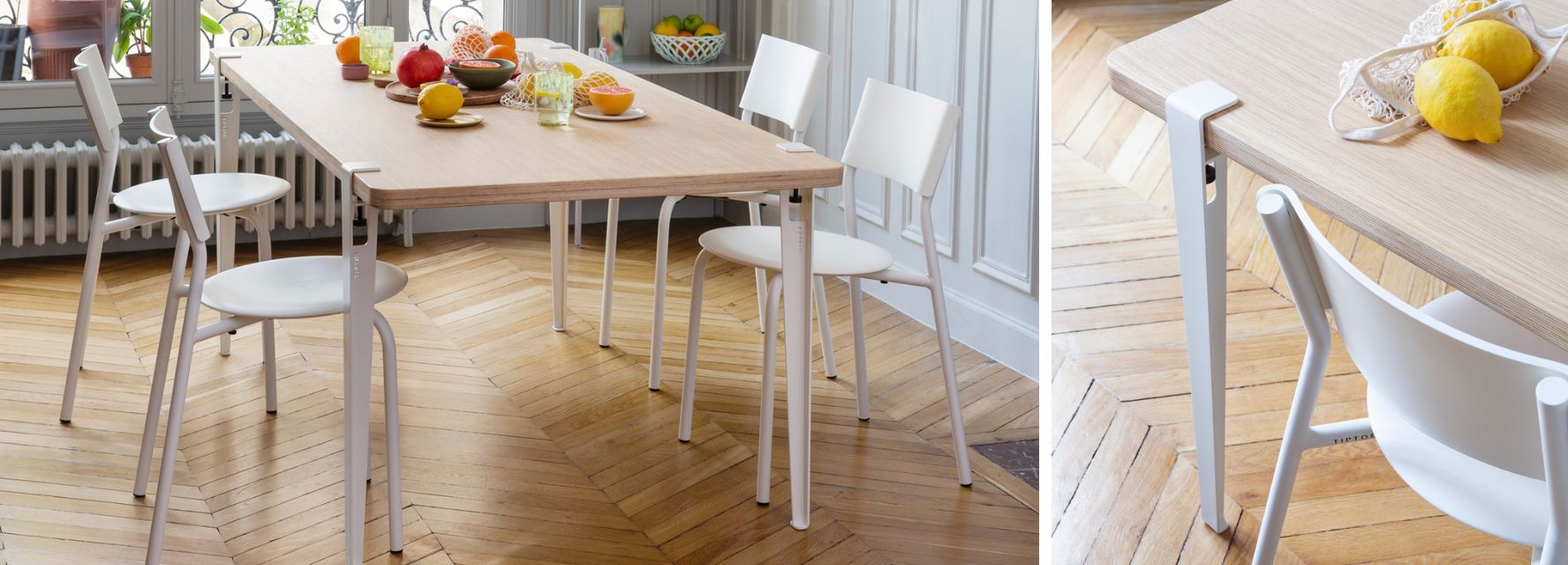Professional Tips for Setting Up Dining Space Table Legs for Optimum Stability
When it involves setting up dining area table legs, accomplishing maximum stability is paramount for both capability and appearances. The procedure begins with choosing the best materials and hardware, adhered to by careful placement and factor to consider of weight distribution. Each action plays an essential function in ensuring that the finished item endures everyday usage without compromising safety and security or style stability. Understanding the nuances of these components can considerably influence the total outcome. What particular strategies can enhance stability even better?
Choose the Right Legs
When selecting the suitable legs for your dining-room table, it is important to think about both performance and looks. The legs you select will considerably influence the total layout and security of the table. Assess the table's intended use; if you expect constant celebrations, sturdier legs, such as those made from solid wood or steel, may be more ideal, as they use boosted durability and support.
Standard dining tables generally vary from 28 to 30 inches in height, so ensure the legs straighten with this criterion for comfort. Conical legs can include a modern touch, while transformed legs may convey a more classic aesthetic.

Select Appropriate Hardware
Just how can the appropriate hardware boost the stability and long life of your dining room table? The option of appropriate equipment is critical to making certain that the legs of your table are securely connected and able to endure normal usage. High-quality screws, screws, and braces offer the needed strength to sustain the weight of the table, along with any kind of extra tons put upon it throughout celebrations or meals.
When choosing screws, choose those made from long lasting products such as stainless steel or brass, which resist corrosion and keep integrity over time. The size of the screws is similarly crucial; they must permeate deeply right into the table's structure without endangering integrity. For bolted connections, think about using lock washing machines to stop loosening up because of vibration or motion.
Furthermore, using corner braces can include extra support, especially for larger tables or those with much heavier tops. These brackets distribute weight evenly and assist keep the table's shape. Making sure that the equipment you select is suitable for the particular products of your table will even more enhance its general stability and longevity, allowing you to appreciate your dining experience for several years to find.
Ensure Appropriate Alignment
Appropriate alignment of eating space table legs is vital for both aesthetic appeal and useful stability. To accomplish ideal placement, start by gauging the range from the table's corners to the leg attachment factors.
Use a degree throughout installment to verify that each leg is perpendicular to the tabletop. It is recommended to mark the preferred leg placements on the underside of the table with a pencil or masking tape before safeguarding them.
In addition, ascertain the alignment after the first screws are tightened, as changes may be needed before completely safeguarding the equipment. By focusing on proper positioning, you not just enhance the table's general design however additionally ensure that it continues to be stable and useful for several years to find.

Think About Weight Circulation
After guaranteeing correct positioning of the eating space table legs, it is essential to think about weight distribution to enhance stability and functionality. dining room table legs. Correct weight distribution is vital in stopping wobbling and making sure that the table can support its designated lots without risk of tipping or collapsing
When placing the legs, ensure they are placed at equivalent distances from the facility of the table to evenly disperse the weight across the framework. Consider the weight of the tabletop and any read type of products that will regularly hinge on it, such as ornamental items or tabletop appliances. Tables with heavier surfaces should preferably have legs located closer to the corners, as this makes best use of the base of support and decreases the risk of instability.
In addition, if the table is meant for use in a high-traffic area, consider making use of larger products for the legs or adding maintaining components, such as cross-bracing or a lower shelf - dining room table legs. These adjustments can assist preserve balance and protect against moving during usage. Ultimately, a well-considered weight circulation strategy will considerably boost the table's overall efficiency, ensuring it continues to be a eye-catching and useful focal point for your dining area
Examination Security Prior To Use
Testing the stability of the dining-room table before usage is a critical action that should not be ignored. Guaranteeing that the table is secure and protected can stop crashes and prolong the life expectancy of the furniture. Begin by using gentle pressure to various points on the table surface area. Lower on the center and afterwards along the sides, moving or observing any type of wobbling. If the table shows instability, recognize the legs or joints that may require modification.
Following, examine that all screws and fasteners are tightened up effectively. Loose connections can result in instability and possible damages over time. If needed, use timber glue on joints to improve security, making sure to allow appropriate drying time.

Final Thought
To conclude, the installment of dining area table legs requires cautious factor to consider of materials, equipment, placement, and weight circulation to attain maximum security. By choosing strong legs and high-grade bolts, guaranteeing specific placement, and dispersing weight equally, the architectural honesty of the table can be substantially enhanced. Conducting a stability test before regular use additionally makes certain that the table will certainly withstand everyday stress, thus giving read a secure and reliable eating experience.
When it comes to installing dining space table legs, accomplishing optimum security is extremely important for both functionality and aesthetic appeals. The legs you choose will dramatically affect the total style and security of the table (dining room table legs). Typical dining tables generally range from 28 to 30 inches in elevation, so make sure the legs line up with this standard for comfort.Appropriate placement of dining room table legs is important for both visual allure and practical stability.In verdict, the setup of eating space table legs requires cautious factor to consider of products, placement, equipment, and weight More hints distribution to accomplish optimum security
Comments on “How to Maintain and Care for Your Dining Room Table Legs”